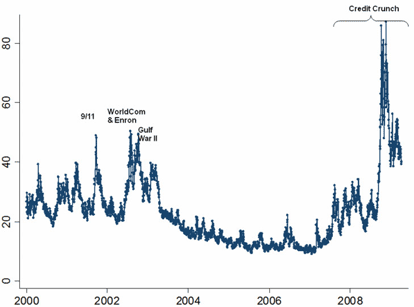This column says that the policy response to the financial crisis seems to have been adequate – we will not slip into another Great Depression. It argues that growth will resume by late 2009, as uncertainty is subsiding due to global cooperation.
Last year I wrote a piece forecasting a severe recession in 2009. Based on my analysis of 16 previous economic shocks, I predicted a 3% drop in GDP and a 3 million increase in unemployment in Europe and the US. Unfortunately, this looks to have been reasonably accurate. But I also worried about a far worse outcome – the world slipping into another Great Depression due to a damaging policy response to the crisis. Fortunately, that has not come to pass.
I now think that the broadly pro-market consensus of the G20 governments means that this worst case scenario has been avoided. Tariffs are not going to be dramatically raised in global trade wars. Governments are not regulating away free markets, and wholesale nationalisations of banks seem to have been avoided as well.
Avoiding the terrible policy mistakes of the 1930s that led to the Great Depression has averted fears of economic armageddon. As a result, uncertainty measured by implied volatility on the S&P 100 – commonly known at the financial “fear factor” – has fallen back by 50%, and the stock market has begun to rise. I believe growth will resume by late 2009, and the halfway point of the credit crunch may have passed.
Another Great Depression has been avoided
Much like today, the Great Depression began with a stock market crash and a meltdown of the financial system. Banks withdrew credit lines and the interbank lending market froze up. What transformed the financial crisis into an economic disaster, however, was the compounding effect of terrible policy. The infamous Smoot-Hawley Tariff Act of 1930 was introduced by desperate US policymakers as a way of blocking imports to protect domestic jobs. Instead of helping workers, this worsened the situation by freezing world trade. At the same time, policymakers were encouraging firms to collude to keep prices up and encouraging workers to unionise to protect wages, exacerbating the situation by strangling free markets.
Uncertainty is now falling
Figure 1 shows the implied volatility on the S&P 100 as a measure of uncertainty. This jumped over threefold after the dramatic collapse of Lehman Brothers in September 2008. But it has fallen back by half as political uncertainty has receded. Events like the G20 meetings showed how international leaders have agreed to maintain free markets, albeit with sensible increases in financial regulation. But this agreement on a common global policy response is radical stuff. Having the Americans and the British agree with the French on anything is an achievement, and an agreement on a global plan for economic growth is more or less unprecedented.
Figure 1. The financial ‘fear factor’: Daily US implied stock market volatility on the S&P 100 (%)
But we are only halfway there, as the extent of the damage to the economy is still very much uncertain. There is a sea of toxic assets whose value is unknown and whose eventual victims remain unclear. As a result uncertainty has fallen, but to a level that before the Credit Crunch occurred only after extreme events like the 9/11 terrorist attacks.
The fall in uncertainty will help spur the recovery
The heightened uncertainty after the credit crunch led firms to postpone investment and hiring decisions. Mistakes can be costly, so if conditions are unpredictable, the best course of action is often to wait. Of course, if every firm in the economy waits, economic activity slows down (Bloom, Floetotto and Jaimovich 2009). This big spike in uncertainty in the fall of 2008 was a major factor behind the recent rapid slowdown. But now that uncertainty is falling back, growth should start to rebound. Firms will start to invest and hire again to make up for lost time.
So the good news is that no government is advocating abandoning capitalism altogether. Instead, they are applying the short-run therapy of massive tax and interest rate cuts and the long-run therapy of stricter financial regulation. The patient sitting in the recovery ward now just has to pray that this treatment has no nasty side effects.
References
Nicholas Bloom, Max Floetotto and Nir Jaimovich (2009) “Really Uncertain Business Cycles” Stanford University mimeograph.
1 The predictions are made from VAR forecasts. This VAR methodology is described in “The impact of uncertainty shocks”, forthcoming in Econometrica, My predictions use this methodology with a 3x uncertainty shock and a 30% stock-market fall.
![]()
- Bulenox: Get 45% to 91% OFF ... Use Discount Code: UNO
- Risk Our Money Not Yours | Get 50% to 90% OFF ... Use Discount Code: MMBVBKSM
Disclaimer: This page contains affiliate links. If you choose to make a purchase after clicking a link, we may receive a commission at no additional cost to you. Thank you for your support!



Leave a Reply